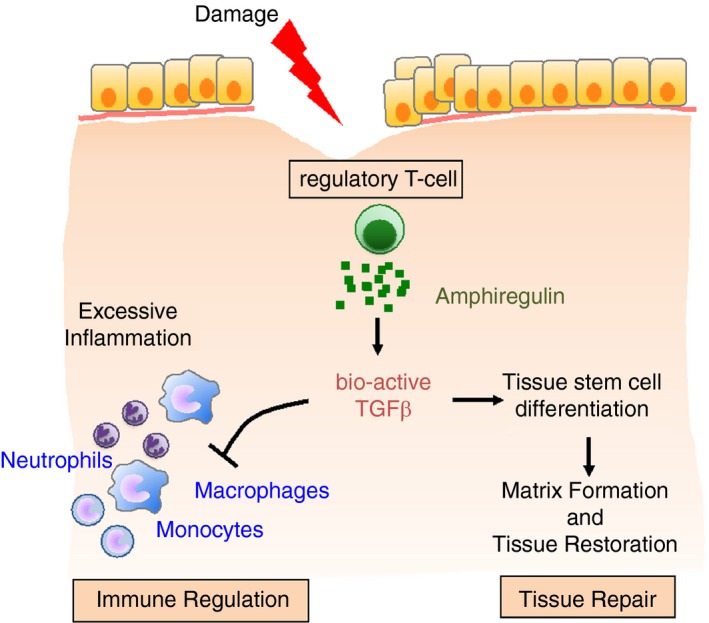Figure 1.

Dual function of regulatory T‐cells during wound healing. The process of wound healing has to be well orchestrated and disruption of this process, for instance due to the infection of the healing wound, can lead to a failure of wound healing or excessive scar formation. Regulatory T‐cells rapidly accumulate at sites of injury and keep local immune responses under control so that no excessive immune responses develop that could cause additional damage. This immune‐regulatory ‘damage‐limiting’ function of regulatory T‐cells is complemented by an immune‐independent ‘damage‐resolving’ direct role in wound healing. In this process, regulatory T‐cells at the site of injury release growth factors, such as the epidermal growth factor (EGF)‐like growth factor Amphiregulin, that directly contribute to the differentiation of cells within the injured tissues, in this way contributing to wound healing and the restoration of tissue homeostasis. TGFβ, transforming growth factor β.
